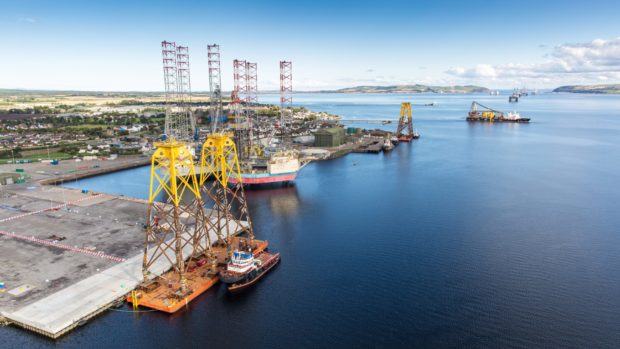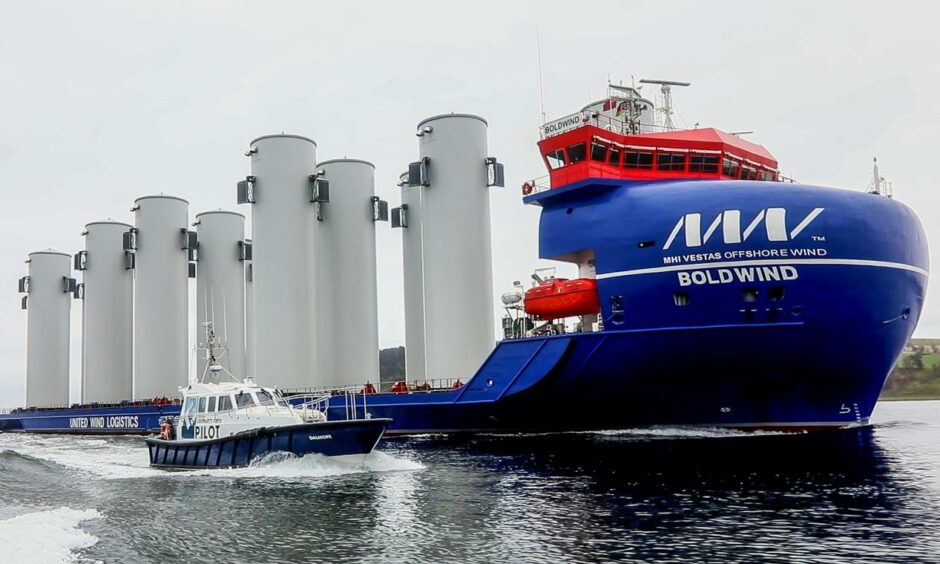The Cromarty Firth has been named in a new study as the best location for a marshalling and assembly hub to support large-scale expansion of Scotland’s offshore wind industry.
The area’s trust port said the move would create “major supply chain and employment opportunities locally.”
The independent Port Enhancement Study was carried out for Scottish Enterprise (SE), Highlands and Islands Enterprise (HIE) and Crown Estate Scotland.
Its findings highlighted the area’s existing port and laydown facilities, capacity and potential for expansion, as well as its proximity to future development sites.
It comes after an earlier Crown Estate Scotland report, published last year, found facilities at Invergordon and Nigg would be vital in supporting a major expansion of the offshore wind sector, which will be pivotal for Scotland in meeting its net-zero targets by 2045.
Research highlights area’s long-term potential
The new study pointed to the firth’s “long-term potential” to support the construction and deployment phases of future Scottish offshore development zones, including the latest ScotWind Leasing round, the majority of which are on its doorstep.
It also emphasised the importance of port alliances and clustering activity, in order to offer the offshore wind industry “whole project solutions.”
The Invergordon-based Port of Cromarty Firth (PCF) said the area was already a “step ahead” on that front, with such partnerships already established through the work of the Opportunity Cromarty Firth (OCF) initiative.
Four key infrastructure facilities – the PCF, Port of Nigg, Port of Inverness and Highland Deephaven – are included among OCF’s membership.
PCF chief executive, Bob Buskie described the study as “great news for the Cromarty Firth and the Highlands.”
He continued: “Scotland is on the cusp of a green energy revolution and with our leading port facilities, there is nowhere in the country better placed to take advantage of this seismic shift in energy generation.
“This has been built on a track record of success within the offshore energy industry stretching back more than 40 years. During that period, the port has worked hard to develop a world-class supply chain and a highly skilled workforce.
“Coupled with that, the Port has recently invested more than £50 million in the facilities at Invergordon, which have played an integral role in the Beatrice, Moray East and Kincardine offshore wind developments.”
Mr Buskie added: “Our facilities include significant open laydown capacity, deep-water berths and sheltered anchorages, suitable for accommodating the largest offshore wind components, such as turbine blades, tower sections and foundations, as well as the biggest offshore installation and support vessels.
“Being a trust port, where all of our profits are reinvested into the port’s development, gives us huge scope to develop our facilities further and we are investigating new plans to substantially increase our capacity further.
These fresh plans will further open up the Cromarty Firth to supporting a host of major wind farm projects earmarked in offshore areas both close to us geographically and further afield.”
The Inverness-based Global Energy Group, which owns the Port of Nigg, is planning to build a £100million fabrication facility for the offshore wind industry at the site.


